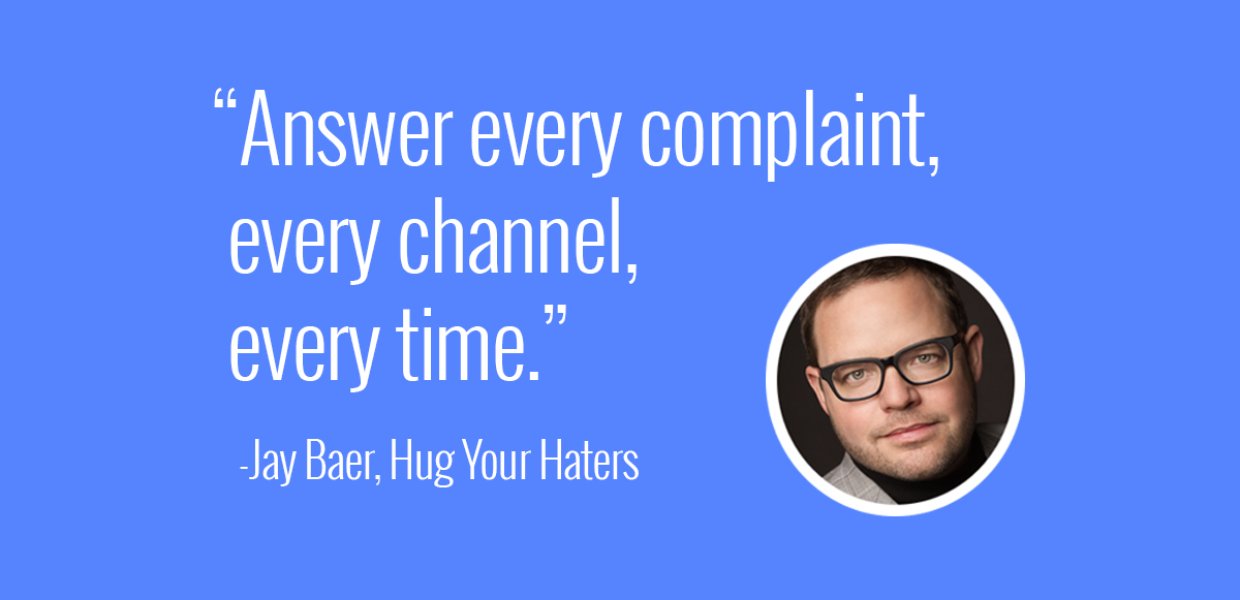Marketers are gravitating towards a more humanistic approach to reputation management and customer service thanks to findings from New York Times best-selling author Jay Baer’s recent book "Hug Your Haters." The book primarily speaks to the community manager, a role that was once deemed optional but with the growing issue of decreased brand perception and social noise, hires have increased.
Baer sets a clear understanding of what the customer experience means today by highlighting the single problem that businesses today are facing. Much to the average reader’s surprise, the problem is not feedback from haters, but rather the fact that businesses continue to ignore them.
With this assertion as the key driver for all insights, research and equation for customer success that Baer develops, readers (presumably in-house marketers) are able to gradually trek past the innate fear of responding publicly to angry customers.
So what is the magic formula? Answer every complaint, in every channel, every time.
While this sounds straightforward, focusing on each element of the formula helps brand managers to identify areas for competitive opportunity and pull together smarter, more user-experience driven traditional and digital marketing mixes.
Every Complaint
The book explains that at a high level, there are two distinct groups of “haters”: the offstage and the onstage haters. And while haters don’t make up the majority of online audiences, their complaints pose a significant opportunity for improving brand perception and customer retention.
Every complaint that a brand answers, whether it is a small comment or a full-fledged crisis, shows both the complainers and other online researchers that the brand cares. Baer makes a poignant suggestion to consider every negative review as an opportunity to turn “lemons into lemonade,” noting that a 5% increase in customer retention in turn boosts profits by 25-85 percent. Once these complaints are addressed, customers are more likely to voice a positive opinion to their networks online.
Every Channel
Baer’s groups haters into two distinct categories to explain distinct intent, expectations, wants/needs of each group. Importantly, these different groups flock to different channels, which the book dives into with an action plan for handling situations for both.
Offstage haters are typically older audiences who go directly to channels like email or phone calls in order to address their issue head on and get a direct answer. These haters do not seek to lower the reputation of the brand at any level, and simply seek resolutions to their issues. Baer notes that offstage haters are the traditional complainers. But with mobile democratizing the way individuals communicate, the majority of haters is transitioning into onstage hater behavior.
Onstage haters, in contrast, are across various social media channels. They do not necessarily want feedback or answers, but rather, an audience to spread their experience with. With 84% of frequent complainers owning a smartphone, onstage haters are important to be especially vigilant of when creating a review response strategy. Baer compares the tendencies of onstage and offstage haters in a “hatrix” that complies key stats and metrics on each group.
Every Time
"Hug Your Haters" brings in several examples of brands who experience frustrated onstage and offstage customers by working with Edison research to test the correlation between customer advocacy and frequency of responses. With this, Baer delivers two key action plans for each type of hater group, simply summed up in two acronyms: HOURS and FEARS.
 The main driver of competitive superiority and good business overall is a brand’s ability to leverage these strategies as efficiently as possible while still managing core friction points like a lack of a customer-centric company culture. With these findings summed up in a simplistic, comprehensive approach, a community manager’s key takeaway from Baer’s book is the fact that customer dissatisfaction is real, and brand responsiveness is more important than ever to turn haters into fans.
The main driver of competitive superiority and good business overall is a brand’s ability to leverage these strategies as efficiently as possible while still managing core friction points like a lack of a customer-centric company culture. With these findings summed up in a simplistic, comprehensive approach, a community manager’s key takeaway from Baer’s book is the fact that customer dissatisfaction is real, and brand responsiveness is more important than ever to turn haters into fans.









